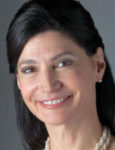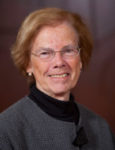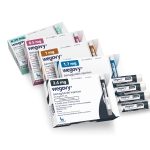 As school leaders and parents grapple with questions about school reopening this fall, a key measure to consider is the community transmission rate of COVID-19, say two educators and an infectious disease specialist.
As school leaders and parents grapple with questions about school reopening this fall, a key measure to consider is the community transmission rate of COVID-19, say two educators and an infectious disease specialist.
When states and cities are reporting that more than 5% of COVID-19 tests are positive, the transmission rate is high enough that schools could become hot spots for community outbreaks, they said.
If the rate is below 5%, and the school district has a plan for providing children and adults with masks, a plan to enact and maintain social distancing measures, a plan to clean school surfaces and improve air ventilation, and a plan to conduct contact tracing if someone tests positive, then schools could reopen safely, they said.

If you “open the school regardless of what the transmission rate is in the community, you’re asking for trouble, because you’re bringing people from the community into the school setting,” Tina Q. Tan, M.D., a pediatric infectious disease physician at Northwestern University’s Feinberg School of Medicine, said during a July 30 AHCJ webcast on reopening schools in the time of COVID-19. “If the level of COVID-19 in the community is high, it would not be a good idea for schools to reopen or for parents to send their children to school.”
As of July 29, all states in the U.S., on average, reported positivity rates of more than 5%, according to the COVID Tracking Project and Johns Hopkins University of Medicine.
President Trump is pushing schools to reopen this fall in all 50 states, regardless of the positivity rates, and has threatened to withhold federal funding from school districts if they choose not to reopen. He said on July 29 that children are at low risk from COVID-19 and that keeping them out of school is “causing death.”
While research from Iceland, South Korea and Switzerland has shown that children under the age of ten don’t seem to transmit the SARS-Cov2 virus (which causes COVID-19) as well to others, a July 30 study published in the Journal of American Medical Association showed that children under the age of 5 carry as much or more virus in their nasal passages.
Further, adults in schools – such as teachers, custodians and secretaries – are vulnerable to infection, and can spread COVID-19 to each other and children.
“Remember schools are not just children,” said Tan. “Schools include a lot of adults …and many of the studies that have looked at possible school transmission have actually found that it’s the adults in the schools that are bringing the virus into the school setting and getting the students, and other teachers infected.”
For this reason, many teachers oppose reopening schools in school districts where COVID-19 positivity rates continue to be higher than 5%.

Reopening decisions have “to be about community transmission,” Lily Eskelsen García, president of the National Education Association, said during the AHCJ webcast. “We are not going to open schools until its safe.”
For a model of how schools can reopen safety, Eskelsen García suggests reporters look to the Maryland Educators Association, which has developed a plan to bring children with special needs back to school this fall first, and then, if all goes well, to slowly expand to the broader student population. [The NEA is the nation’s largest teacher’s union.]
Other approaches for school reopening were included in a July 2020 report published by the National Academies of Sciences, Engineering and Medicine, which encouraged K-5 schools to find ways to reopen.

“We provide a framework” with the report, Enriqueta Bond, lead author of the National Academics report said during the webcast. “To bringing together…a coalition or task force of stakeholders who need to be involved in the decision [making] to figure out in advance what the indicators they’re going to [use and] what the goals are going to be” for reopening schools.
To watch a recording of the webcast, click here.




